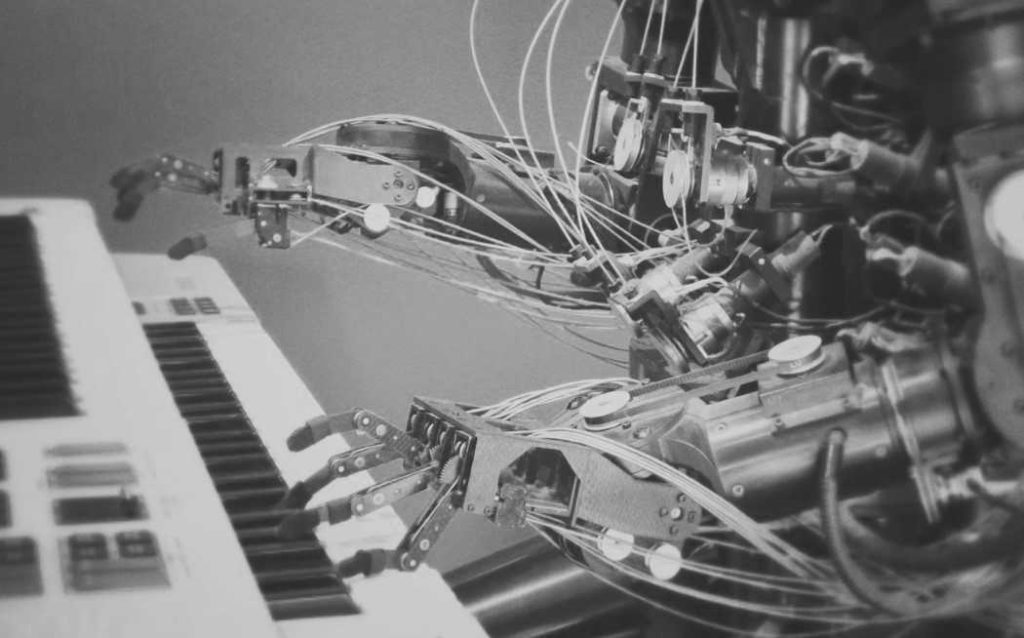We are on the eve of the New Year. It is a bit scary, right? This scare and some curiosity relate to the fact that each new year presents us new technologies, innovations, and something that previously seemed impossible.
The global digital transformation does not leave anyone indifferent. Various artificial intelligence solutions continue to surprise, scare us and, at the same time, make our life better and more comfortable.
Artificial intelligence is associated with using computers to understand human intelligence. However, it is not necessarily limited to biological methods. The existing intelligent systems have rather narrow fields of application. For example, smart programs that can beat people in chess cannot measure a person’s body temperature or propose a new breakfast recipe.
In short, artificial intelligence is an acronym that you will meet and feel more and more often. Therefore, if you still underestimate its presence in your life, this 10-minute post is right for you!
AI Definition: What is Artificial Intelligence About?
Artificial intelligence (AI) is a technology that enables computers to think or act in a human way. This branch of computer science allows building smart machines able to perform tasks that typically require human efforts.
AI takes information from the surroundings and generates a response based on what it learns.
Artificial intelligence is considered to be an interdisciplinary science providing multiple approaches. In the 1950s, AI was described as any task performed by a program or a machine. If a human did the same activity, we would say he/she had to apply intelligence to accomplish the task.
In fact, artificial intelligence systems usually demonstrate at least some of the following behaviors associated with human intelligence:
- planning
- reasoning
- learning
- knowledge representation
- problem-solving
- perception
- manipulation
- creativity (to a lesser extent)
Nowadays, AI significantly affects the way we live, work, and spend our free time. Sometimes we even do not realize it. AI is becoming an essential part of our lives, as technologies become more and more advanced. Just think about your digital workplace and gadgets that surround you.
Today researchers are even trying to teach robots to feel and express emotions. And, you know, they already have some successful results.

How Does Artificial Intelligence Work?
Can machines think? This question worried scientists many years ago.
Let’s say, the fundamental goal and vision of artificial intelligence were clearly described in the paper “Computing Machinery and Intelligence” (1950) by Alan Turing.
Today AI is defined as the study of agents that receive percepts from the environment and perform actions (Artificial Intelligence: A Modern Approach by Stuart Russell and Peter Norvig).
These authors explored four different ways that define the field of AI:
- thinking humanly
- thinking rationally
- acting humanly
- acting rationally
Artificial intelligence commonly falls under the following categories:
-
Narrow Artificial Intelligence
Narrow AI is a kind of artificial intelligence that operates within a limited context. This simulation of human intelligence is often focused on completing a single task. Although such machines may seem intelligent, they operate under far more limitations than even the most basic human intelligence.
Narrow Artificial Intelligence is probably the most successful realization of AI to date. It is literally everywhere around us.
Narrow AI solutions have experienced numerous breakthroughs recently, which have had significant societal benefits and have contributed to the economic increase.
Among the vivid examples of Narrow AI, let’s recall Siri, Google search, Image recognition software, Alexa, self-driving cars, IBM’s Watson, etc.
-
Artificial General Intelligence
Artificial General Intelligence is the type of artificial intelligence that we can find in movies (for example, robots). These are machines with general intelligence and, much like human beings, they can apply that intelligence to solve various problems.
Many AI researchers tried to create a machine with human-level intelligence that can be applied to any task. However, it is fraught with difficulties. Logically, AGI has been the muse for science fiction, where hyper-intelligent robots overrun humanity.
Artificial Intelligence Risks: How AI Can be Dangerous
The most cheesy thought that comes to mind is that artificial intelligence kills creativity. But this is often not a valid thesis.
For example, drawing working tasks on a whiteboard, using colorful stickers or listing daily objectives in a bright notebook look much more fun and creative. However, any contemporary task management tool has a dozen advantages and offers even more outstanding creative opportunities for a user.
Even the smartest AI systems will unlikely exhibit human emotions (like love or hate). Some experts identify two possible scenarios, considering how AI might become risky:
- Artificial intelligence can be programmed to do something devastating. It may look like an autonomous weapon that is programmed to kill and instigate mass casualties. This risk presents even in a narrow AI, and it grows as the levels of AI intelligence increase.
- Artificial intelligence can be programmed to do something beneficial. However, it may develop a destructive way of achieving its goal. This may happen when we can not fully align the AI goals with ours. This can happen if an obedient intelligent machine understands literally what you asked for.
The key goal of artificial intelligence safety researches is to never place humanity in the position of defenseless victims.
AI Tendencies: Asia is Ahead of the Rest
Many people think that the US big companies have moved far ahead alone. However, this is a big mistake. Such Asian business giants Baidu, Alibaba, or Lenovo are investing heavily in AI in different fields.
Actually, China has a strategic plan to turn artificial intelligence into a core industry for the country (that will be worth $22bn by 2020).
Analysts believe that China will have an advantage over the US when it comes to future AI research at least because of huge investments, concerted data-gathering, big data analytics, and weak privacy laws.
How to get started with AI?
Let’s say, you can start training a machine-learning model any time, just make sure you have a strong theoretical background. Perhaps, one of the easiest ways to experiment with artificial intelligence services is via the cloud.
By the way, we’ve recently shared the posts about the core cloud computing models that can be helpful:
Feel free to explore all the spheres of AI appliance from building your own machine-learning models to different web services.





